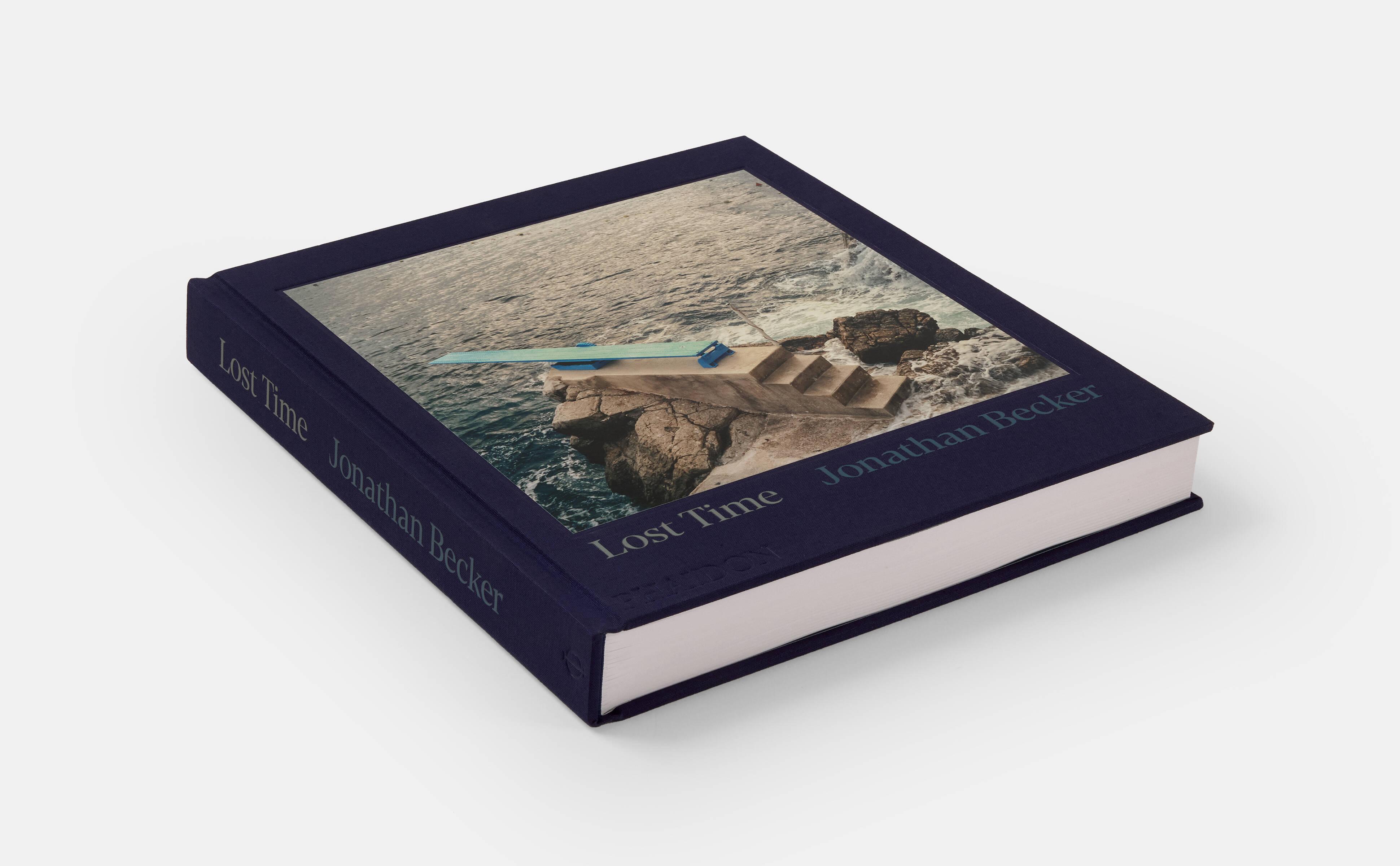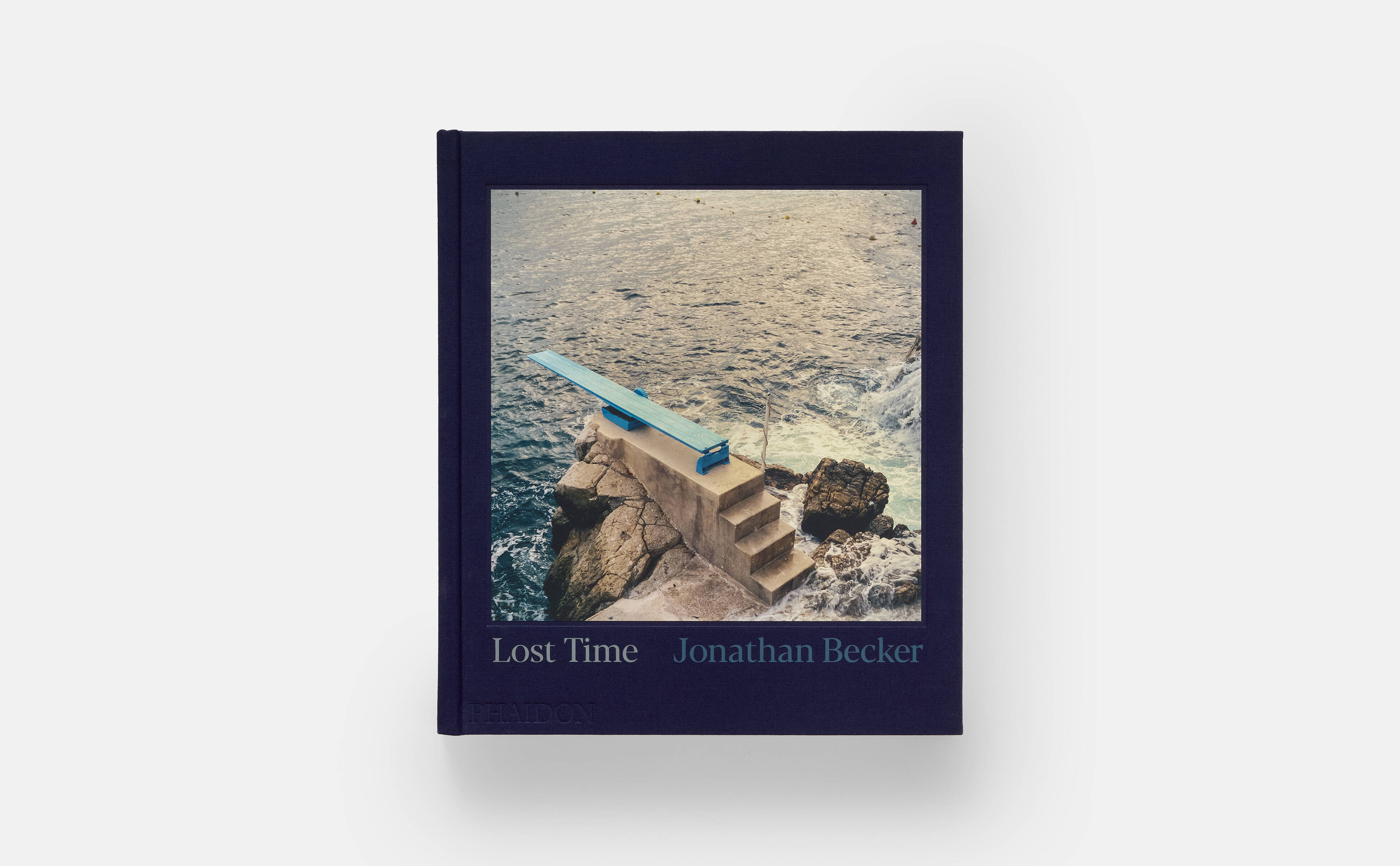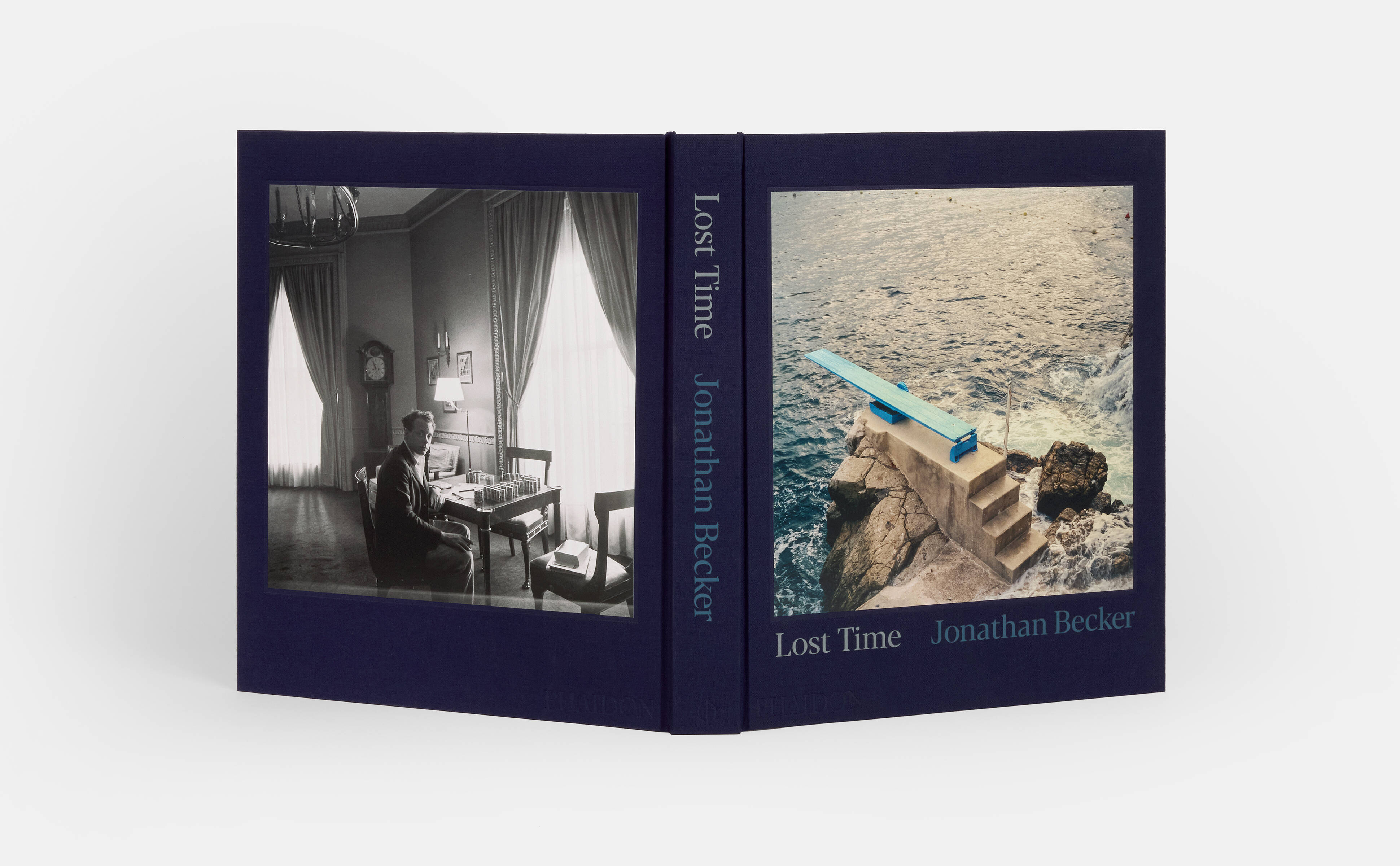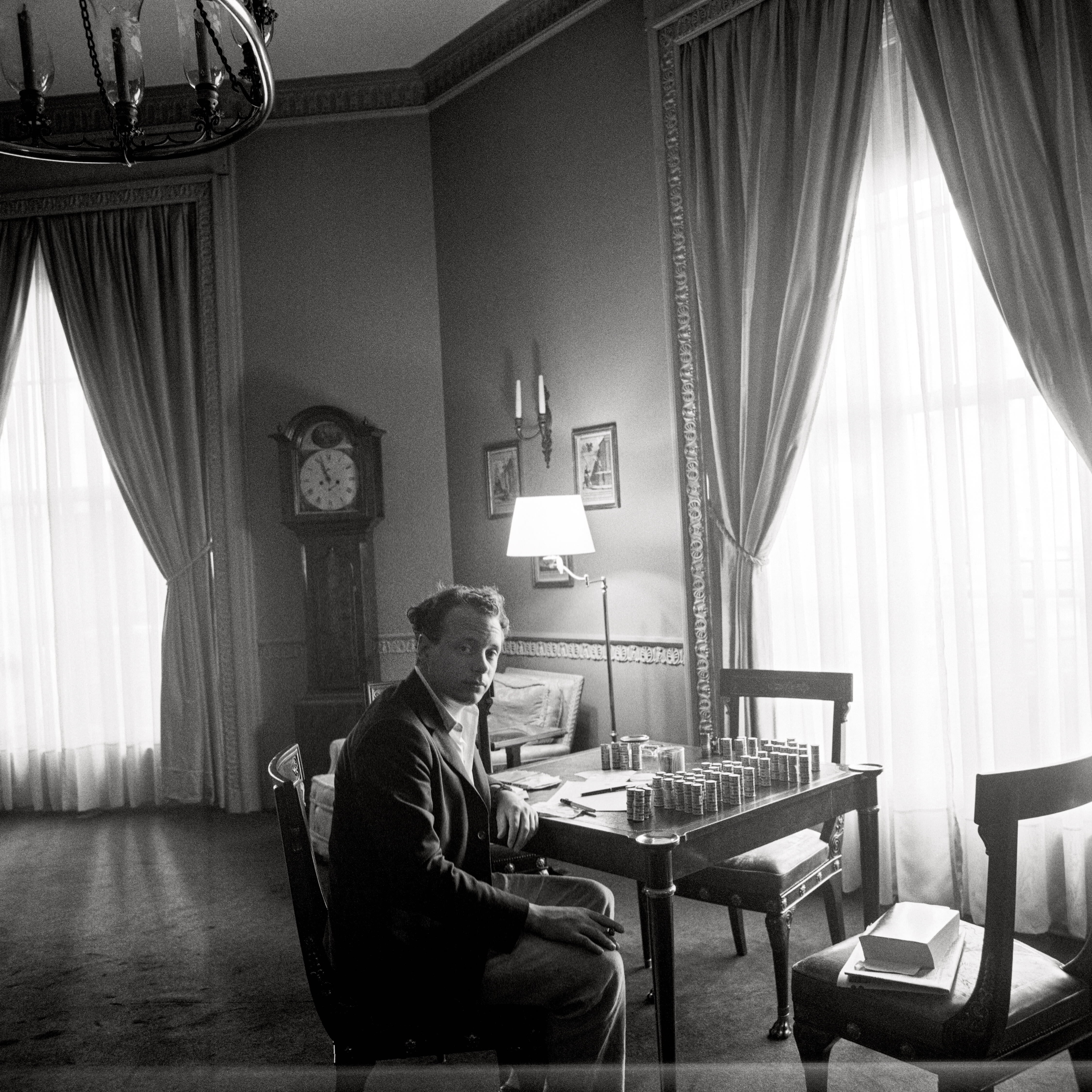
INTERVIEW: How Jonathan Becker captured contemporary America and beyond.
Jonathan Becker is one of the great visual storytellers of our time. Our new book Lost TIme collects photographs from across his career, charting his journeys through New York, Paris, and London from the 1970s to the 2010s.
You may not know the name, but chances are at some point in your life you’ve seen a Jonathan Becker photograph. Becker is best known for his five decades of editorial magazine work, having photographed for publications including Interview, Town & Country, Vanity Fair, and Vogue, under the auspices of legendary editors from Diana Vreeland to Bob Colacello to Graydon Carter. The list of faces and names he’s captured over the years are a veritable roll call of late 20th and early 21st century celebrity, and include legendary personalities such as Andy Warhol, Nicole Kidman, François Truffaut, Billy Wilder, Tom Cruise, and Jackie O.
Born in 1954, Becker spent his late adolescence photographing with a Rolleiflex camera, and in a summer course at Harvard, discovered the work of Surrealist photographer Brassaï. Although he failed the class - in typical Jonathan-Becker fashion - he parlayed his final paper into a meeting with the acclaimed photographer, who soon became his mentor. Through a series of similarly fortuitous encounters, Becker made his way through the kitchen of Elaine’s restaurant in New York, into the glamorous realm of glossy magazines, and around the world to the homes and estates of artists, politicians, writers, filmmakers, and royalty.
Our new book, Lost Time, is the first to survey five decades of work by the photographer and cigar-chewing bon vivant. It presents both his personal and editorial photographs – many for the first time – revealing the dense narratives and psychological studies he captures within each carefully constructed frame.
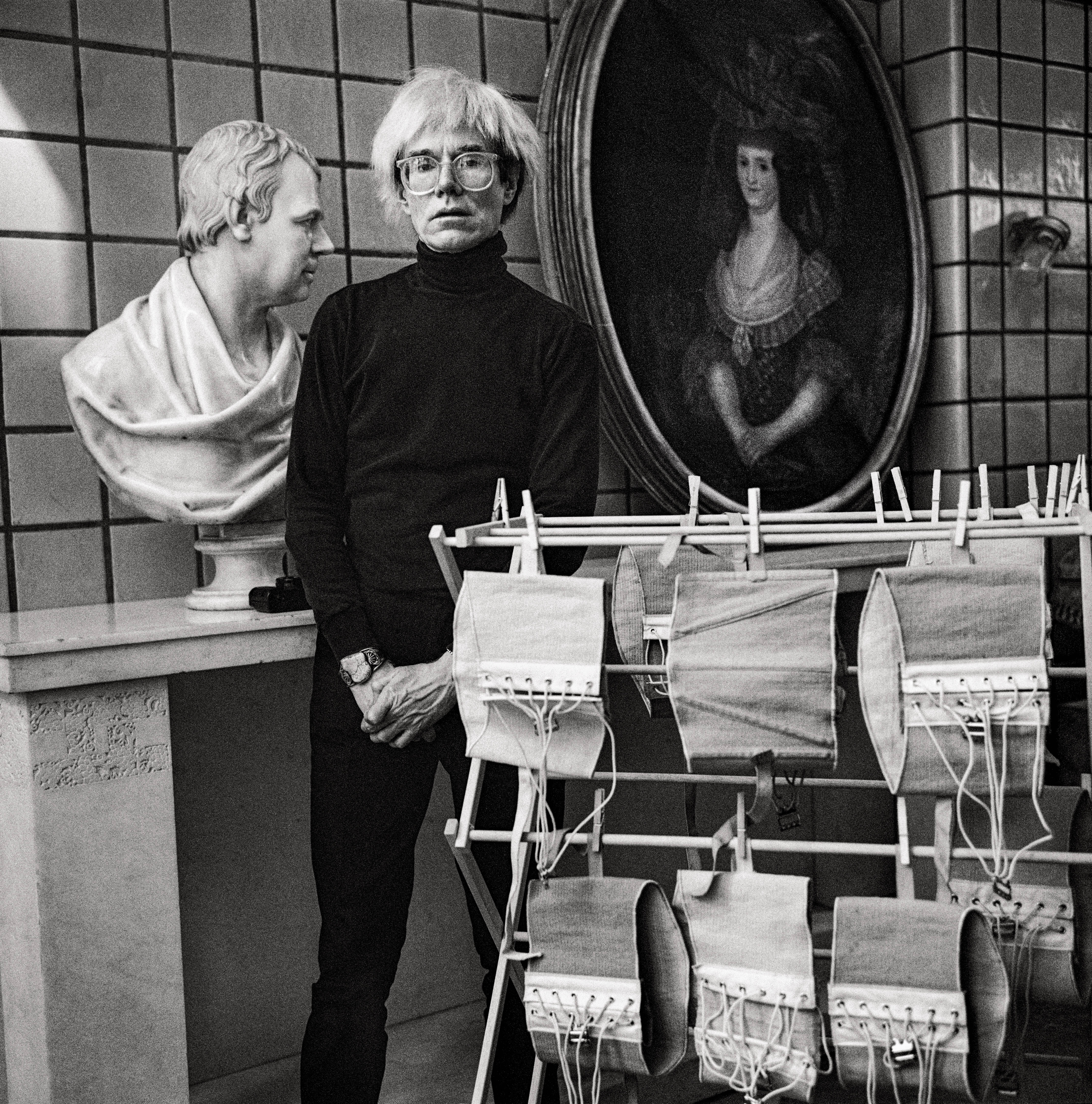 Andy Warhol and his corsets at the fourth Warhol Factory, New York, 1986.© 2024 Jonathan Becker. All rights reserved
Andy Warhol and his corsets at the fourth Warhol Factory, New York, 1986.© 2024 Jonathan Becker. All rights reserved
The two hundred plus photographs in the book are sequenced to tell both a compelling cultural history as well as a personal narrative of Becker’s life and career. As readers and viewers, we follow his travels through Paris, London, and New York society of the 1960s, 70s, and 80s.
Becker’s pictures evince a profound understanding of his subjects. Included in the book are artists Ed Ruscha and Cindy Sherman; writers Arthur Miller and Eudora Welty; musicians David Bowie and Mick Jagger. Becker has likewise mastered the ability to evoke a sense of place – the interiors and lush landscapes in which he places his subjects are not simply backdrops to portraits, but character portraits in and of themselves.
The lush interiors of Buckingham Palace sit pages away from images taken on a yacht off Capri’s rugged coastline. On the front cover, a turquoise diving board extends over the shimmering waters of Cap d’Antibes, while on the back, Becker himself sits at a game table in a worn Paris apartment, cigar in hand, the afternoon light shining through opulent draped windows. Throughout, Becker demonstrates his exceptional talent for capturing the essence of the people and places he encounters.
The book features two texts, a brief autobiographical essay by Becker himself, and an introduction by the book’s editor, Mark Holborn, who draws connections between Becker’s work and the writings of Marcel Proust, which posit photographs as visual summaries of what went before, offering a window into the emotional weight of a person, place, or idea from the past.
In the first part of our interview with him, Becker looks back on the early days of his career and how Lost Time came to be.
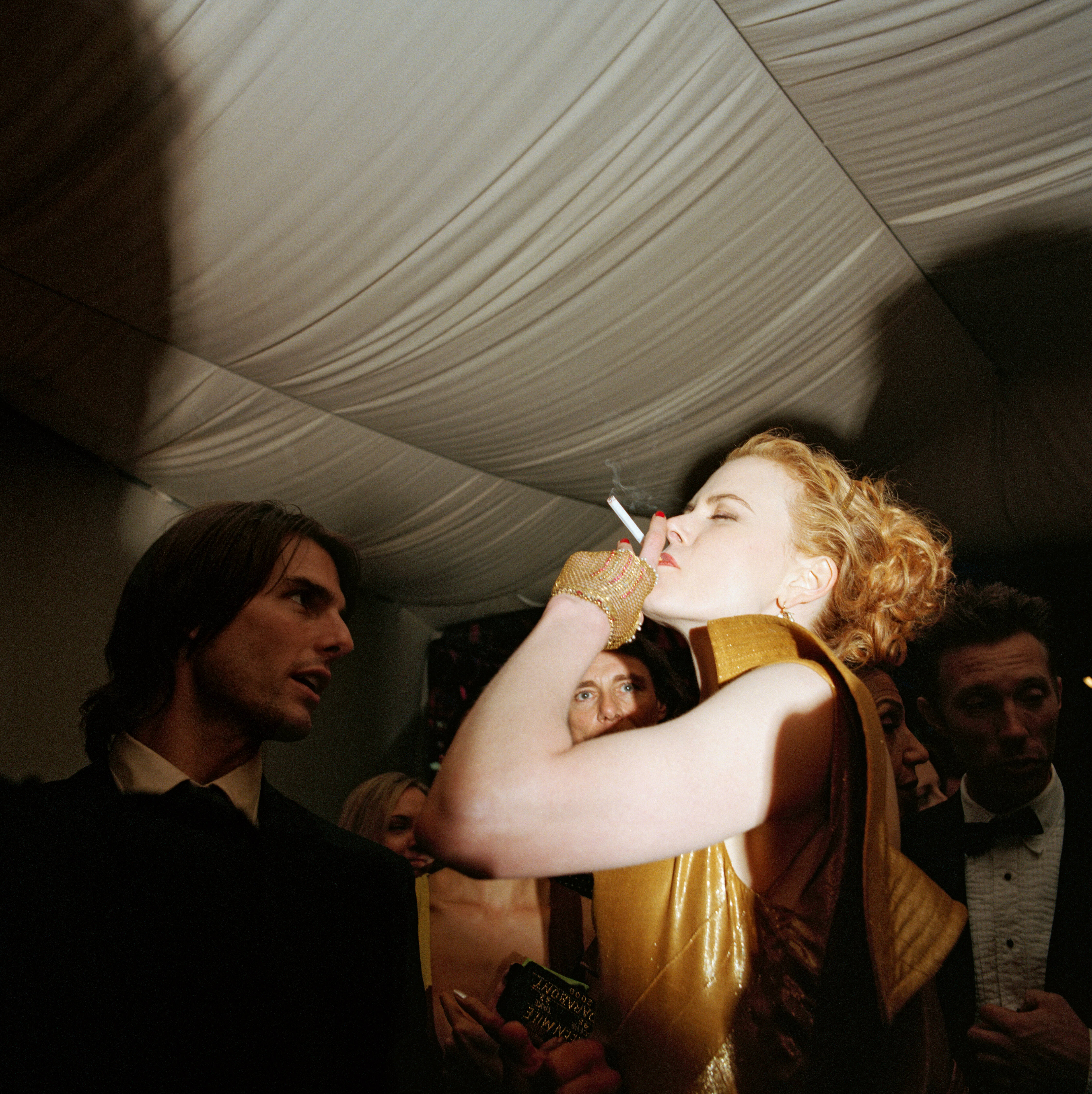 Nicole Kidman, Vanity Fair Oscar Party, West Hollywood, 2000. © 2024 Jonathan Becker. All rights reserved
Nicole Kidman, Vanity Fair Oscar Party, West Hollywood, 2000. © 2024 Jonathan Becker. All rights reserved
What inspired you to publish this book now? "15 years ago Andrew Wylie, (book agent) was trying to put together a compilation of my work. Every publisher was keen to pursue an angle, but I didn’t want any particular theme to it. I wanted the work I’d done to stand on its own and be out of context.
I asked Mark Holborn about it. He’s brilliant. He has his own sensibilities. He came to New York on a Sunday, and he was going to go back on a Thursday, and I had an edit of pictures for him that had been done by art directors I trusted.
Then I got a call on Sunday morning from Tatler to do an assignment of 24 Dukes of the Realm together for the magazine’s 100th anniversary. I had to be there tomorrow. So I left Mark with the pictures and flew out Monday night and got back Tuesday night.
Wednesday morning Mark told me he wasn’t done. So I said, 'what do you mean you’re not done? I thought we were collaborating!' He went back on Thursday morning. I looked at what he’d done on Thursday morning, and I was very, very happy with it. It’s a visual narrative and it tells a story. Not one that one can articulate in words so easily. And I thought this was fabulous, it was just what I wanted."
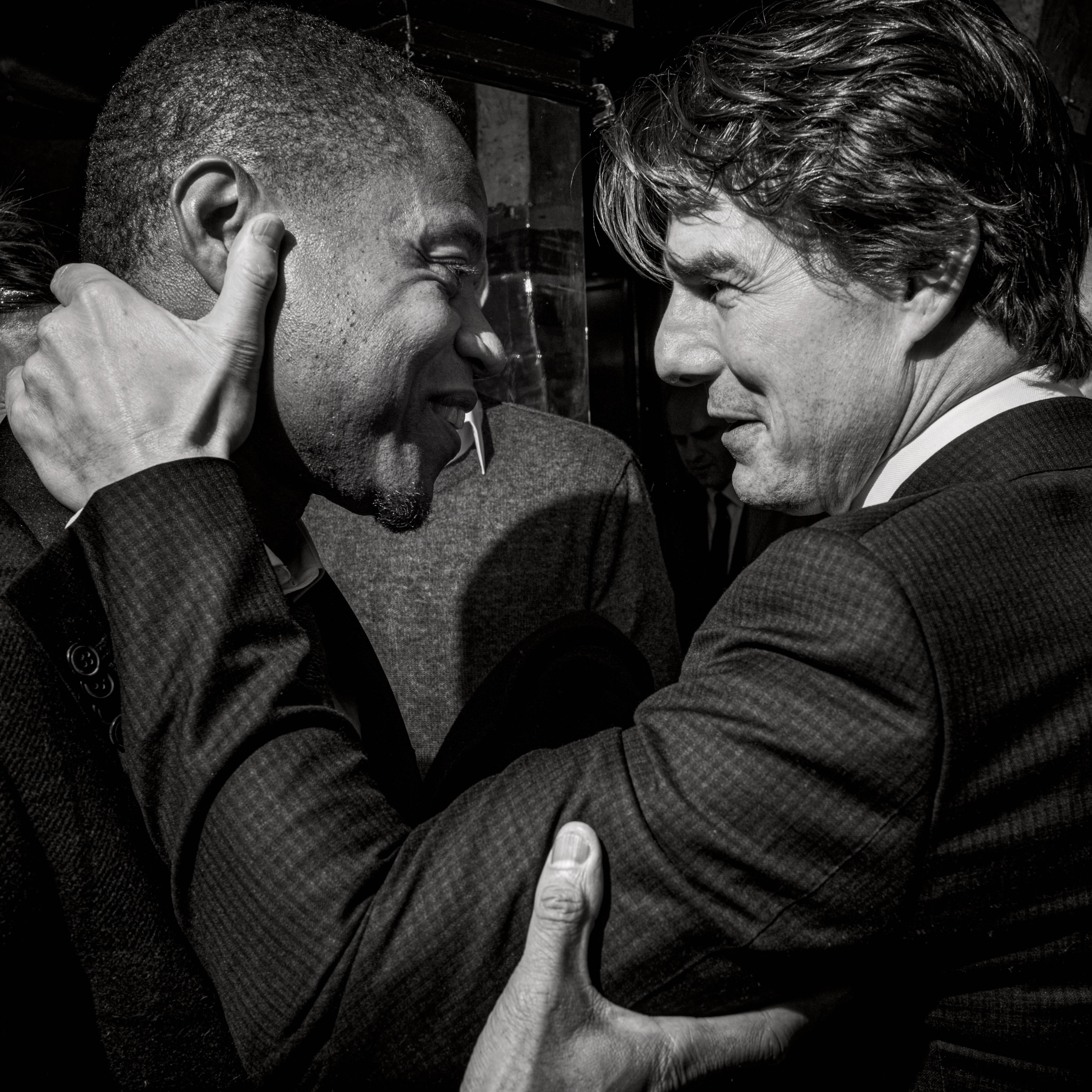 Cuba Gooding Jr. and Tom Cruise, Annabel’s, London, 2015. © 2024 Jonathan Becker. All rights reserved
Cuba Gooding Jr. and Tom Cruise, Annabel’s, London, 2015. © 2024 Jonathan Becker. All rights reserved
What was the story he saw? "I still have trouble articulating it, but it’s my story. It’s the story of my involvement with photography and how photography recorded my experience and how I recorded experience with photography. And it doesn’t make any distinction between the experience I had on or off assignment.
He created a narrative with a sequence. It's not strictly chronological but it has a chronological element. It’s not my concept at all, it was all his. And I thought this is perfect. Then, no one would publish it in that format. There were all these offers to reconstruct it as a different kind of monograph with the usual portrait and landscape sections. I wasn’t in the least interested in that. So it just sat there screwed together in a home made book on my coffee table for ten years.
I let people look at it and I loved it when they liked it. Then a friend of mine came over and said why isn’t this published? Why is it sitting on your coffee table? So I called Billy Norwich (ex-Vanity Fair and Phaidon) and he talked to Deb Aaronson (Phaidon VP Group Publisher) and soon enough Phaidon went with it.
I was very proud of Deb Aaronson for the way she picked up on it. It wasn’t something that was obvious and she saw it. It helped that she’d been working with Mark and understood his sensibility."
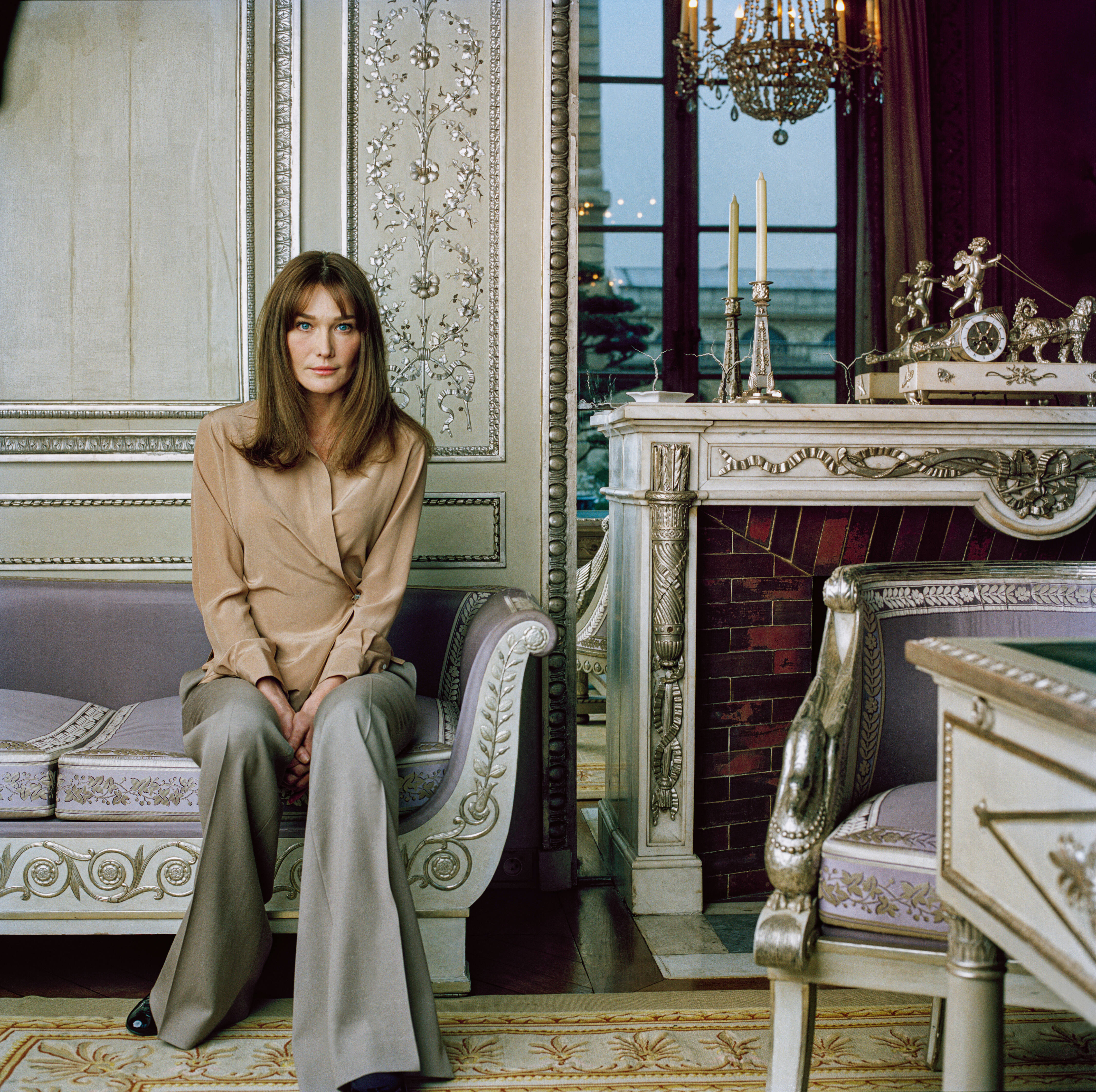 Carla Bruni-Sarkozy, Élysée Palace, Paris, 2009. © 2024 Jonathan Becker. All rights reserved
Carla Bruni-Sarkozy, Élysée Palace, Paris, 2009. © 2024 Jonathan Becker. All rights reserved
Where does the title come from? "A long time ago, I gave Mark a book that Brassai had written. Mark was really taken with my relationship with Brassai. Brassai had written a book about Proust and photography and how the concept of portraits and photography was referenced by Proust and influenced Proust. So that’s how Mark got into this whole concept of Lost Time. Originally he was calling it Losing Time. That’s where the title came from."
In the intro Mark Holborn writes about 'a reflection of an entire life', and what a life! It must have been all consuming for you... "I didn’t really think of doing anything else, and I never did. I hate decisions and I just stick with what I know. From very early on I had a conviction that I could do this. And if I just stuck with my own way of seeing things and that zone that one gets in and to stay there it works."
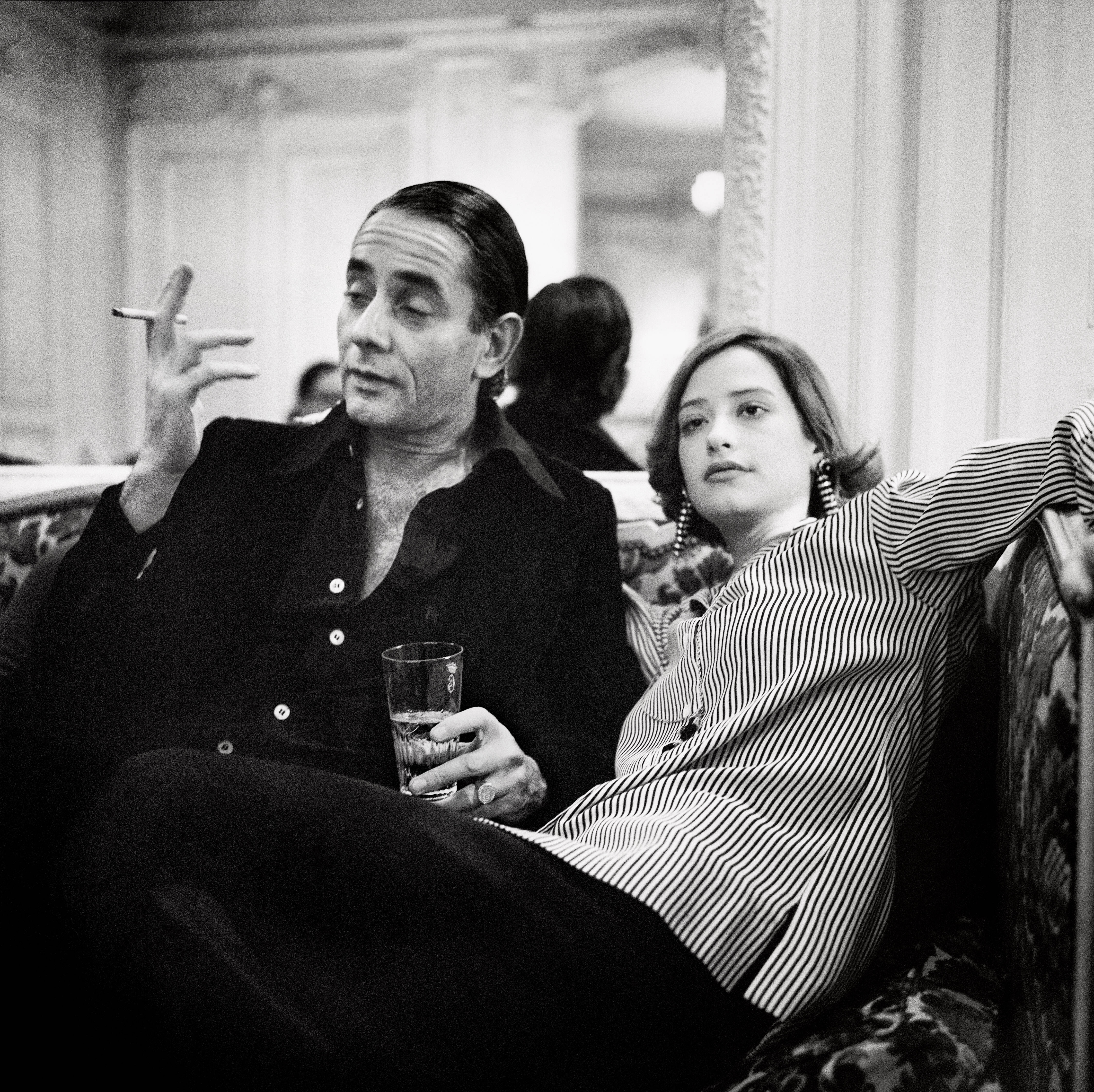 Kenneth Jay Lane and Nicky Weymouth on their honeymoon, Hôtel deCrillon, Paris, 1975. © 2024 Jonathan Becker. All rights reserved
Kenneth Jay Lane and Nicky Weymouth on their honeymoon, Hôtel deCrillon, Paris, 1975. © 2024 Jonathan Becker. All rights reserved
You started with photography really young, didn’t you? "There’s a picture of me as a kid running through Central Park with a Box Brownie round my neck. I built a dark room when I was 12 – a funky dark room with a bucket. It was a mess. But I could make black and white things.
I was sent to camp two months every summer. And my father said to me, 'you have to have a job if you’re gonna stay home this summer.' I was 12-years-old. Was that actually legal? I worked as a bus boy at a restaurant. It was horrible, filthy. My stomach was turning, and it was revolting. It was a fancy restaurant, so at that point I decided to try and make portraits of children for their parents and sell them out of the resort in Hampton, and it worked. It passed for having a job and I made money.
And then I decided the next summer I wouldn’t even take commissions, I would go to the amusement park, just go there and do their portraits on the rides. It would be much more spontaneous and interesting, and I’ll go back to the darkroom and make prints of the kids. By then I was nearly 14 and I was really keen on photography.
I was aware of Cartier Bresson and Robert Franck and becoming fascinated with what cameras could do. I was convinced I could make a go of photography as a calling and that was it. I’m not that imaginative, I tend to fixate, and I fixated on that. I’ve only ever done a few things well. I had a conviction that I could do this, and I still have that now. It’s something I know I can do.
Did you get any kind of parental encouragement? My father was awfully academic, Harvard, Rhodes Scholar, Doctorate from Oxford, and all this stuff. That was a hard act to follow, it was always difficult with me. His great line was, 'you don’t have a mothball’s chance in a public urinal.' Which is kind of literary!
I chose to find the humour in it, but it was not very encouraging. So the darkroom was always a safe place. I could actually tell people they could not come in, because I was working on something. It was very private. I enjoyed that privacy and being able to work on my own things without any distraction whatsoever."
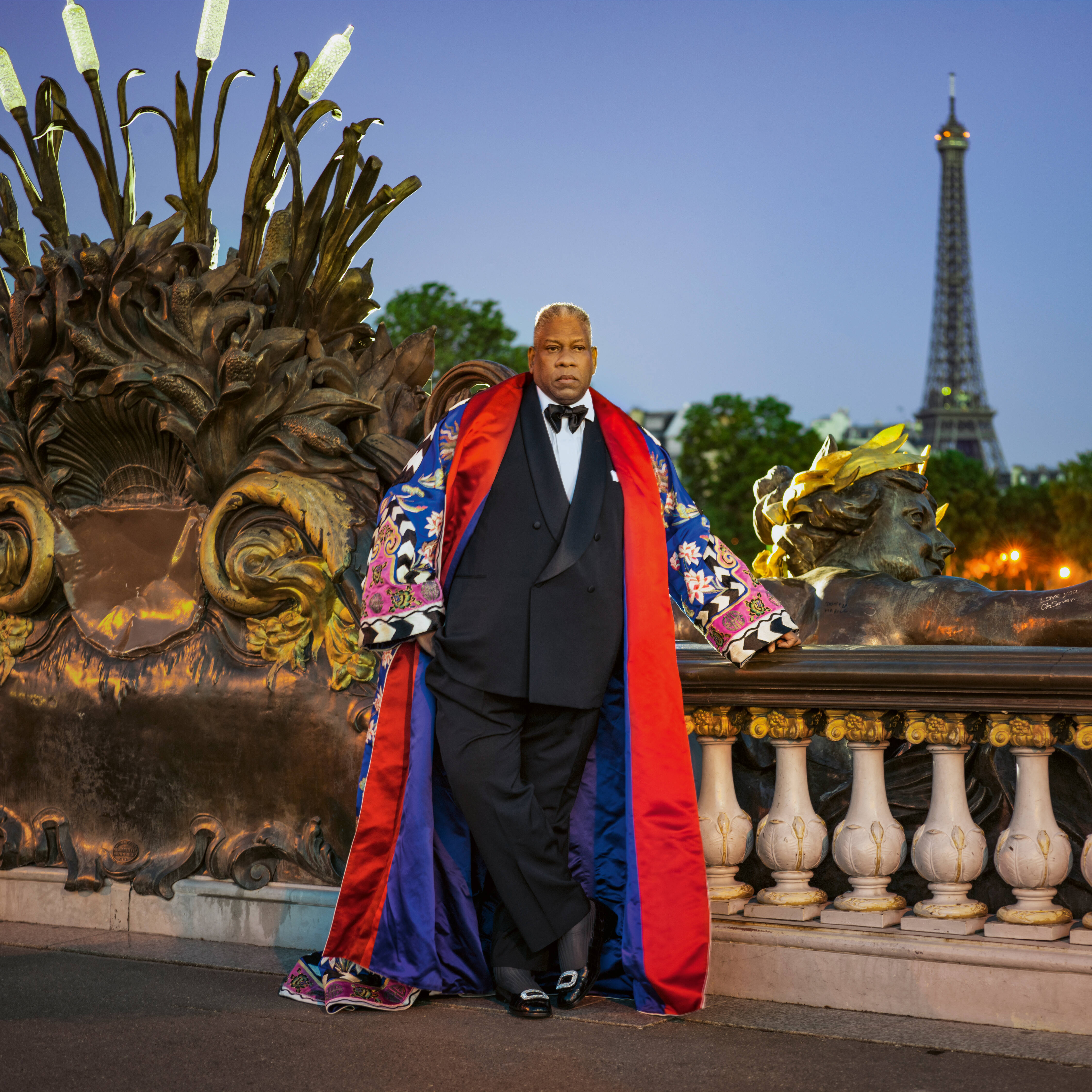 André Leon Talley, Pont Alexandre III, Paris, 2013. © 2024 Jonathan Becker. All rights reserved
André Leon Talley, Pont Alexandre III, Paris, 2013. © 2024 Jonathan Becker. All rights reserved
How did you work your way into magazines? At the time, magazines were everything. So it was obvious for me to gravitate there, and it happened very quickly. They just absorbed work. It was traditional to work for a magazine for a photographer.
I was lucky that what I did seemed to serve and dovetail with what magazines were doing. No one told me what to do or how to do it, so I was really left to my own devices."
What did the photo editors see in your work initially? "Except for the selection of the subject there isn’t much distinction between what I’ve done working for magazines or not working for magazines. I just follow my own interests. It’s a magical circumstance.
It happened pretty quickly. I started working at Interview when Bob Cochella was the editor, and it was an 'anything goes' circumstance. They were very out of the box, with no boundaries, and were reinventing what could be a story for themselves. I brought them my Elaine’s Kitchen series and I brought them an interview with Brassai. It just seemed to work. I was with the best possible people. I was really lucky. These people were the mainstays of the post-war magazine world."
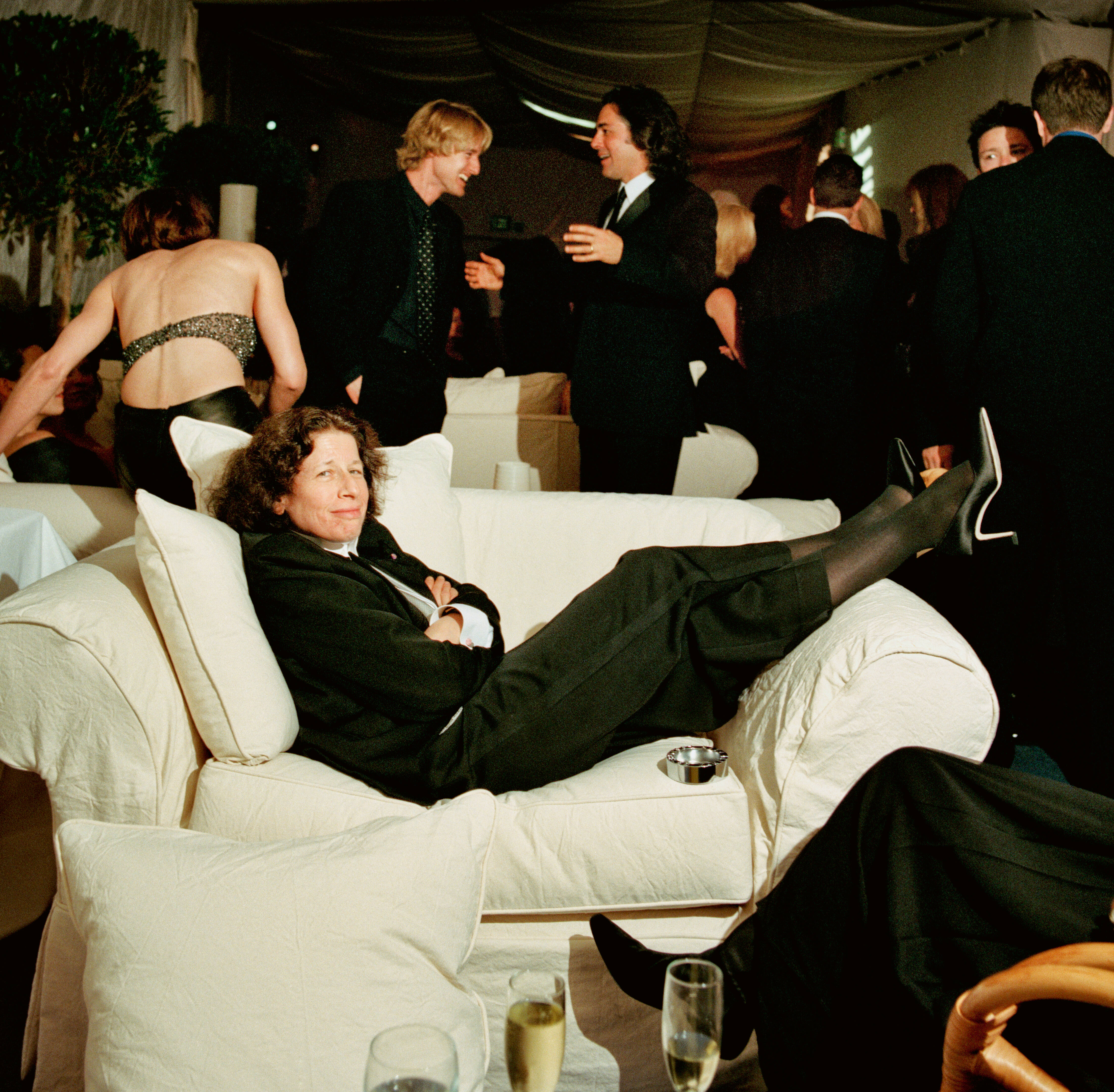 Fran Lebowitz, Vanity Fair Oscar Party, West Hollywood, 2000. © 2024Jonathan Becker. All rights reserved
Fran Lebowitz, Vanity Fair Oscar Party, West Hollywood, 2000. © 2024Jonathan Becker. All rights reserved
What you were doing was so of the moment, is it strange to look back and realise you have become a historian of the era? "People who read magazines are interested in ‘now’. But it’s more interesting, if you’ve done the ‘now’ correctly, to look back from the future. That’s the fascination of photography - because you can look back at things as a document. Or it was, until photoshop turned up!
The concept of photography as a document and a magazine as being ‘in this’ was Frank Zachery’s. He had done Portfolio magazine with Alexey Brodovitch in the 1950s. It was the most beautiful magazine ever made. It was very expensively produced, and they decided they couldn’t possibly accept advertising. And they went under in three years. A copy of it costs thousands of dollars now to buy. It’s the most beautiful thing.
He was in Pennsylvania - mining country - they were practically card carrying communists. These were rural working class people, but here he is editing the illustrated monthly newsletter of the upper classes! And everybody thought how could he do such a thing given his own background? Didn’t he have some kind of resentment? But not at all. He believed in the document. And he was creating a historical record of a life. And the results are not judgemental but they’re endlessly fascinating as a document."
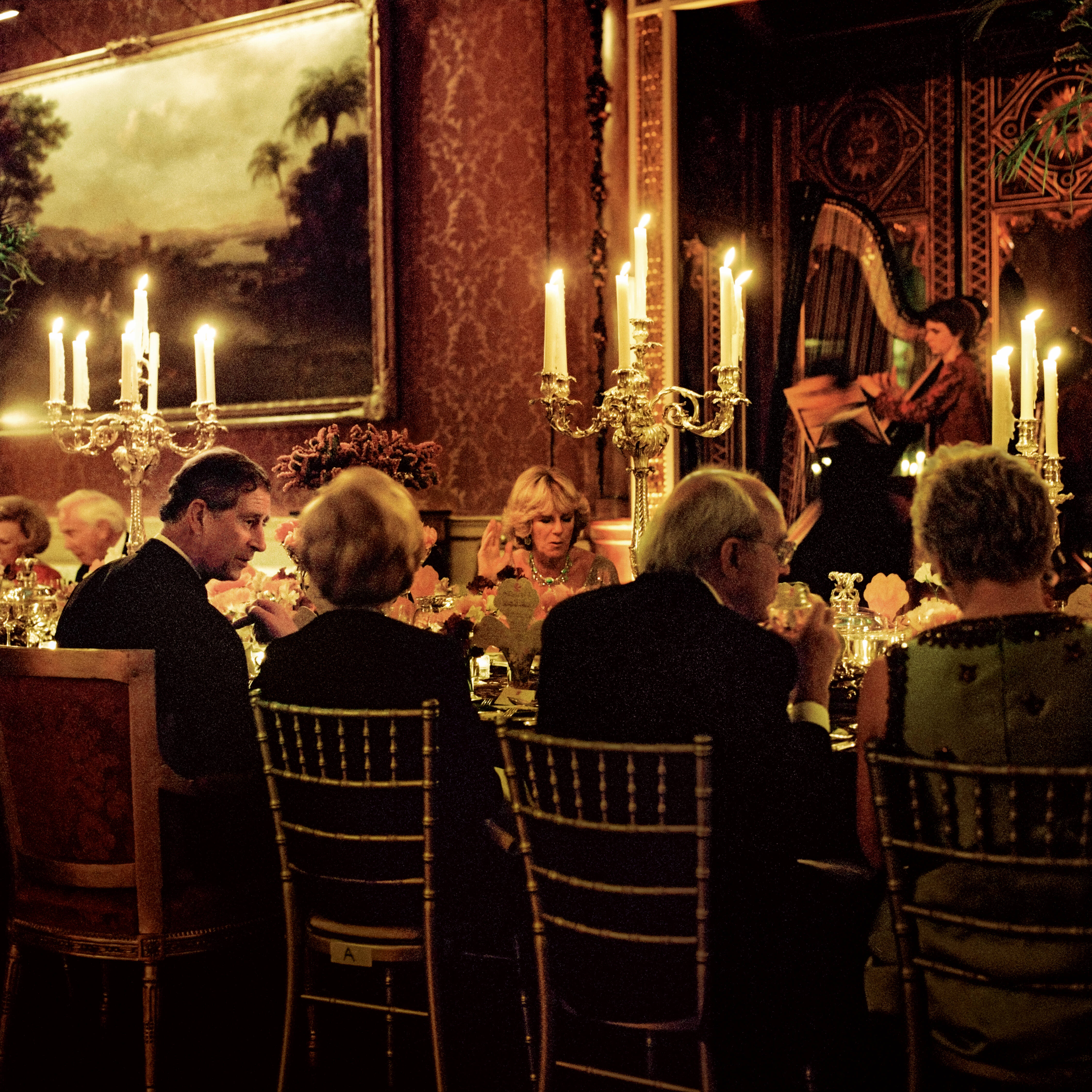 Charles, Prince of Wales and Camilla Parker-Bowles, Buckingham Palace,London, 2001. © 2024 Jonathan Becker. All rights reserved
Charles, Prince of Wales and Camilla Parker-Bowles, Buckingham Palace,London, 2001. © 2024 Jonathan Becker. All rights reserved
And I picked up on that from Frank. My first assignment at Town and Country was the white Russians of New York. Many of them were born before the Revolution. It was fascinating. A lot of the stories that I did over time could have been books in their own right."
Check back soon for part two of our interview with Jonathan in which he talks about drinking Jack Daniels with Frank Sinatra, dressing Donald Trump as Little Lord Fauntleroy, getting close to Dr. Kevorkian, and why Vanity Fair’s Graydon Carter chastised him for not spending enough money.
Take a closer look at, and buy Lost Time here.
